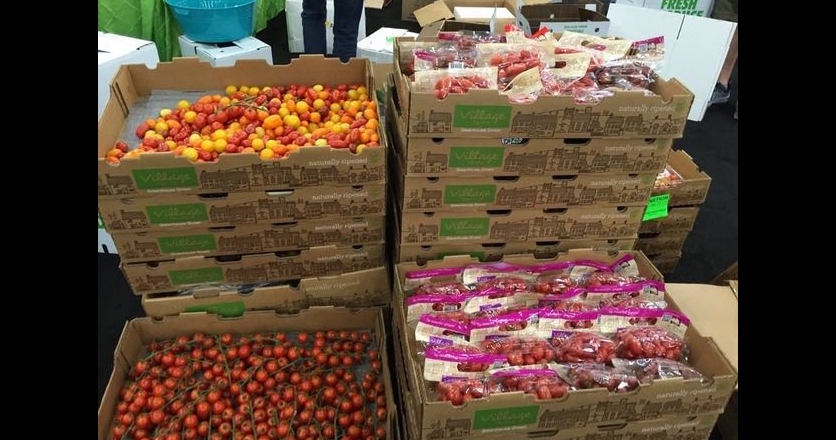How Can We Help a Major Global Environmental, Social and Economic Issue? Simple. Reduce Food Waste.
We all know that there are many people in the world who do not have a sufficient supply of food and go hungry but did you know that collectively we throw away about 1.3 billion tons—2.6 trillion pounds—of food a year? It sounds outrageous, but it’s true.
According to the United States Department of Agriculture, 30-40% of the food produced in America ends up in the landfill. That’s over one-third of all food! Imagine leaving the grocery store with three bags of groceries, that you paid for, then dropping one on the ground to be left there to rot. That’s essentially what Americans are doing. What WE are doing.
So, what’s the big deal?
The Environmental Protection Agency (EPA) states that wasted food is a major global environmental, social and economic challenge. When food is wasted, all of the natural resources it took to get the food to your plate are wasted, as well. Think about the water, energy and fertilizers it took to grow the food; and the fuel, labor and time it took to transport it to the store! The EPA also states that most of the resource inputs and environmental impacts of food waste occur during production, processing and delivery to our kitchens. Not to mention, the carbon dioxide, a potent greenhouse gas, food emits as it decomposes in the landfill—making food waste a major contributor to global warming.
What can we do?
Households account for 43% of all food waste, so there’s actually a lot we can do! Check out a few easy ways you can begin making small adjustments at home to do your part.
Cook one no-waste meal a week
Clear out your fridge and/or pantry by creating simple all-in-one meal ideas, such as a salad, soup, stir fry or omelet! Chop a variety of greens and veggies that may be at the end of its life, add leftover grains and toss with dressing, or chop and sauté produce and throw in a pot of broth for a soup, stir fry or omelet. Have fun, get creative and reduce food waste while saving money.
Really think about how much money is wasted when you throw away your groceries
We have all had that carton of strawberries that got pushed to the back of the fridge only to be found a week later covered in mold or the sad, wilted bell pepper in the produce drawer that were forgotten about. It may not seem like much but it may make a greater impression on us once we know how much money over the course of a year or a month we are wasting. We can save by being more intentional in eating the food we purchase.
Understand “sell-by” or “best-by” dates
Did you know that food expiration dates have little to do with food safety? They’re not even federally regulated. The various categories of date labels, such as “use by,” “sell by,” “best before,” etc. make it extremely difficult for consumers to decipher what each means. The result? Most of us, in fact, studies show 91% of Americans toss foods before it is unsafe to eat. While we hope to see more regulation on date labels in the future, for now we encourage you to visit eatbydate.com and search the item you’re questioning or rely on the “old school” method: smell, look and taste.
Don’t over shop!
Amid some of the cheapest food in history, many of us over shop and fill the pantry and fridge with bulk purchasing, then we don’t eat it and it goes bad. We love stores that allow us to buy in bulk, but think: do you really need a 24-case of blueberry yogurt, 5 boxes of cereal and a 40-count package of crackers? Often, that food cannot be consumed quickly enough, and the “value” saved is now “value” wasted.
Learn tips and tricks to extend the life of your food
Prevent food from spoiling by following simple tips and tricks to extend the life of items that have a short shelf life. To name a few, wrapping banana stems tightly with plastic wrap, storing ripe avocados in the fridge, flipping jars of salsa or containers of sour cream upside down in the fridge and storing milk on the bottom shelf of the fridge are all great ways to keep your food fresh for longer. Visit Save the Food for more great food waste prevention tips
Although, 1.3 billion tons of food waste a year sounds daunting, but together, we can make a difference by taking steps to reduce food waste in our home, while encouraging friends and family to do the same.
Second Servings of Houston is a local food rescue nonprofit on a mission to fight hunger and end waste by delivering surplus food to local charities. To learn more about the severity of food waste and food insecurity, and what we’re doing to fight hunger and end waste locally, visit Second Servings.






